
When we talk about product development, where innovation is the heartbeat of progress, determining which features take precedence, or feature prioritization as it’s called, can seem like a herculean task.
As businesses strive to deliver solutions that resonate with user needs and expectations, feature prioritization surveys emerge as a pivotal compass in navigating the development journey.
A feature prioritization survey is not merely a procedural checkbox; it is the strategic cornerstone that ensures resources are allocated efficiently, and user satisfaction remains at the forefront.
It acts as a crucial test, filtering numerous options to create a roadmap that reflects what users really want.
In this blog, we’ll uncover what makes feature prioritization surveys essential in the product development journey, breaking down the process that turns ideas into user-friendly products. Let’s get started.
What Is a Feature Prioritization Survey?
A Feature Prioritization Survey is a structured method employed in product development to assess and rank various features based on their perceived importance. It serves as a strategic tool for product teams facing choices amidst limited resources and a multitude of potential features.
By leveraging insights from stakeholders, users, or team members, these surveys help identify the key functionalities that align closely with business objectives and user needs.
For example, consider the development of a project management tool with features like task tracking, collaboration tools, and integration capabilities.
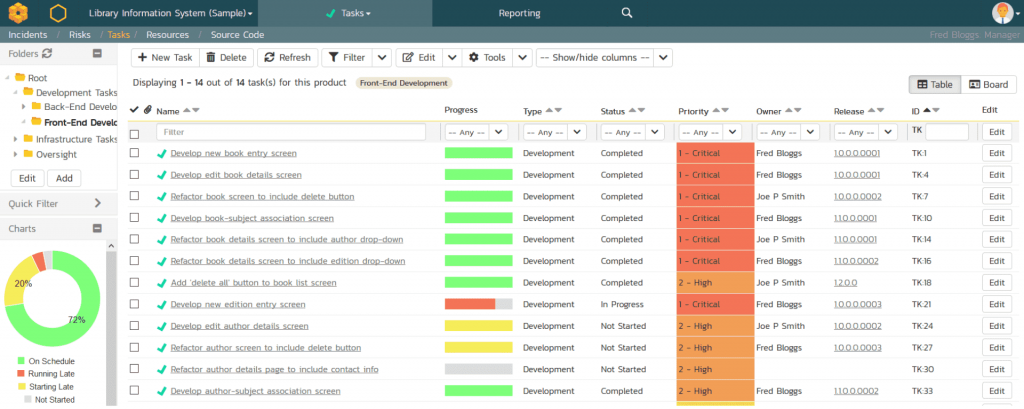
A feature prioritization survey is conducted among team members and stakeholders. They rank these features based on criteria such as essential functionality, user impact, and resource requirements.
The survey reveals that seamless collaboration tools are the highest priority due to their significant impact on user experience and project efficiency.
Benefits of the Feature Prioritization Survey
The significance of feature prioritization surveys extends far beyond a mere organizational task. Let’s take a look at some of the advantages that these surveys bring to the table:
1. Optimized Resource Allocation
Feature prioritization surveys act as a compass, guiding teams in the allocation of resources. In the intricate dance of development where time, manpower, and budget constraints are ever-present, these surveys empower decision-makers to make informed choices.
By focusing efforts on high-impact features, teams not only maximize the utility of limited resources but also minimize the risk of allocating resources to less critical aspects, ensuring efficiency in the development process.
2. Enhanced User Satisfaction
Prioritizing features that resonate with user needs goes beyond meeting expectations—it’s about crafting an experience that users genuinely value.
Feature prioritization surveys dive deep into understanding user expectations, enabling teams to develop functionalities that directly address and fulfill those expectations. The result is not just satisfied users but advocates who find true value in the product.
Also Read - Creating a Customer Satisfaction Survey: Best Practices and More
3. Strategic Roadmap Development
Survey data becomes the cornerstone for a strategic roadmap, providing decision-makers with a blueprint for product development.
This methodical approach ensures that features are implemented in a logical sequence, optimizing the overall impact of the product.
The roadmap acts as a guiding light, offering a comprehensive vision for the development journey. Informed decision-making becomes a continuous process, fostering adaptability and coherence throughout the product’s evolution.
4. Reduced Time-to-Market
Prioritizing features minimizes decision-making bottlenecks and directs development efforts toward critical aspects. This streamlined approach accelerates the time-to-market, providing a competitive edge.
By avoiding delays caused by indecision or resource misallocation, teams can respond swiftly to user needs and market demands. A reduced time-to-market not only enhances competitiveness but also positions the product as a timely and relevant solution.
5. Stakeholder Alignment
Feature prioritization surveys are a collaborative bridge, bringing stakeholders into the decision-making fold.
By actively involving key stakeholders in the prioritization process, teams cultivate a consensus that reflects a collective understanding of priorities and goals.
This alignment ensures that the final product not only meets user expectations but also aligns with the broader strategic objectives of the organization. It also fosters a sense of shared ownership and commitment, creating a harmonious and effective development environment where everyone is invested in the product’s success.
When to Use a Feature Prioritization Survey
Navigating the product development journey requires strategic decision-making, and understanding the opportune moments to employ a feature prioritization survey is instrumental to the task. Here’s a detailed exploration of when and why integrating a feature prioritization survey is particularly beneficial:
1. Initiating a New Project
At the outset of a new project, the feature landscape can be vast and varied. A feature prioritization survey becomes an essential tool to distill the multitude of possibilities and set a clear direction.
By identifying critical features early on, the survey helps shape the initial roadmap, laying a strong foundation for the entire development process.
2. Resource Constraints
In scenarios where resources are constrained, whether it be time, budget, or team capacity, a feature prioritization survey becomes a strategic ally.
It enables teams to focus their efforts on features with the highest impact, ensuring that limited resources are allocated judiciously. This approach maximizes efficiency and minimizes the risk of resource misallocation.
3. Iterative Development Cycles
During iterative development cycles, especially when introducing new features or refining existing ones, feature prioritization surveys offer a structured approach.
They allow teams to continually reassess and reprioritize features based on evolving user needs, technological advancements, or changes in business objectives. This iterative process ensures that the product stays relevant and user-centric.
4. User Feedback Integration
When you have an influx of user feedback in the development process, synthesizing and prioritizing this information can be challenging. Feature prioritization surveys act as a bridge between user feedback and development decisions.
By systematically incorporating user preferences and addressing pain points, these surveys ensure that the product aligns with user expectations and delivers a meaningful user experience.
5. Market Changes or Competitive Shifts
External factors, such as changes in the market landscape or shifts in competitive dynamics, can impact the relevance of certain features.
As a part of market research, these feature prioritization surveys become indispensable in adapting to these changes. They allow teams to realign priorities swiftly, ensuring that the product remains competitive, innovative, and responsive to emerging market demands.
Here’s something to get you started with market research: 100+ Market Research Questions to Ask Your Customers
6. Product Scaling
As a product scales and evolves, the dynamics of what features hold significance can undergo a transformation. Feature prioritization surveys play a pivotal role in navigating this growth phase.
They assist in ensuring that the product continues to meet user needs while accommodating the complexities and expanded scope that come with scaling.
Strategies for Feature Prioritization Survey
To navigate feature prioritization, teams can employ various strategies that align with their specific goals and contexts. Here are key feature prioritization techniques to enhance the efficacy of these surveys:
1. MoSCoW Method
The MoSCoW method stands as a tried-and-true strategy, providing a nuanced approach to feature prioritization by categorizing them into four distinct levels: Must-haves, Should-haves, Could-haves, and Won’t-haves.
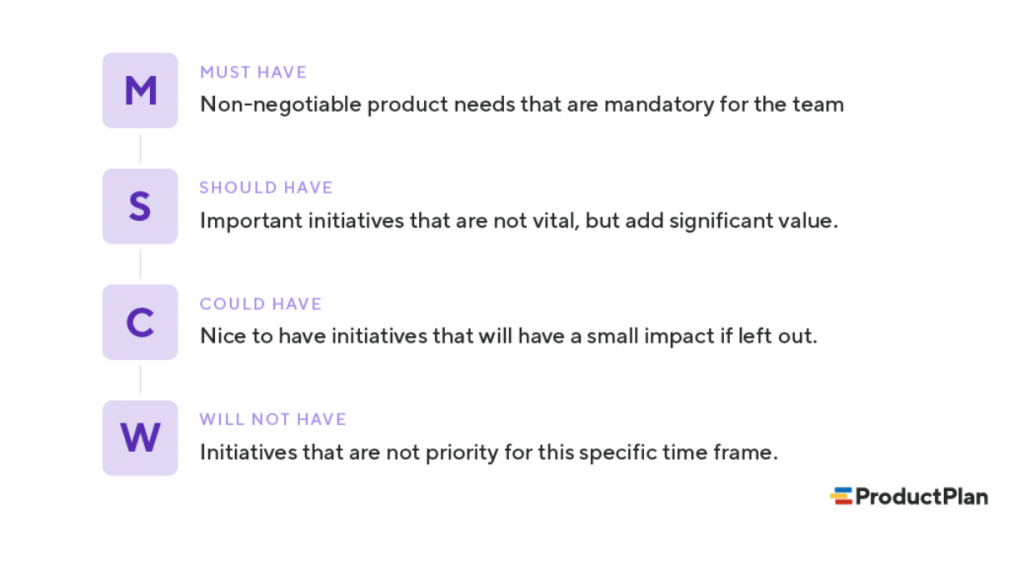
The “Must-haves” represent features critical to project success, setting the foundation for development. “Should-haves” denote important but not essential features, offering flexibility in meeting user needs.
“Could-haves” embody desirable features that, if implemented, enhance the overall product experience. The category of “Won’t-haves” comprises intentionally excluded features, ensuring a clear focus on the essentials.
The method brings a structured and easily comprehensible framework to the prioritization process, aligning development efforts with project requirements and user expectations.
2. Kano Model
The Kano Model introduces a sophisticated lens to feature prioritization by categorizing features based on their impact on user satisfaction.
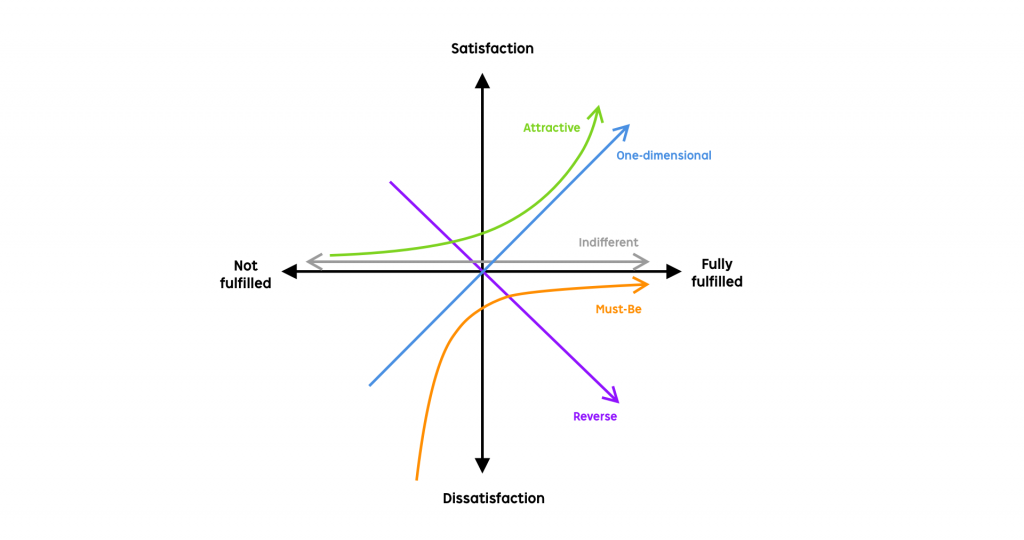
It classifies features into Basic, Performance, Excitement, Indifferent, and Reverse categories. Basic needs are essential, Performance needs correlate with satisfaction, Excitement needs can delight customers, Indifferent needs have minimal impact, and Reverse needs can cause dissatisfaction.
This model guides teams in balancing the essential requirements with features that can elevate user experience beyond baseline expectations. It fosters a deeper understanding of user needs and preferences, shaping the development process not only to meet but exceed user expectations.
3. Weighted Scoring
Weighted Scoring injects a quantitative dimension into the feature prioritization process. Each feature is assessed against predefined criteria, such as user impact, business value, and technical feasibility.
Participants assign weights to these criteria, providing a nuanced evaluation. The weighted scores are aggregated, yielding an overall priority score for each feature.
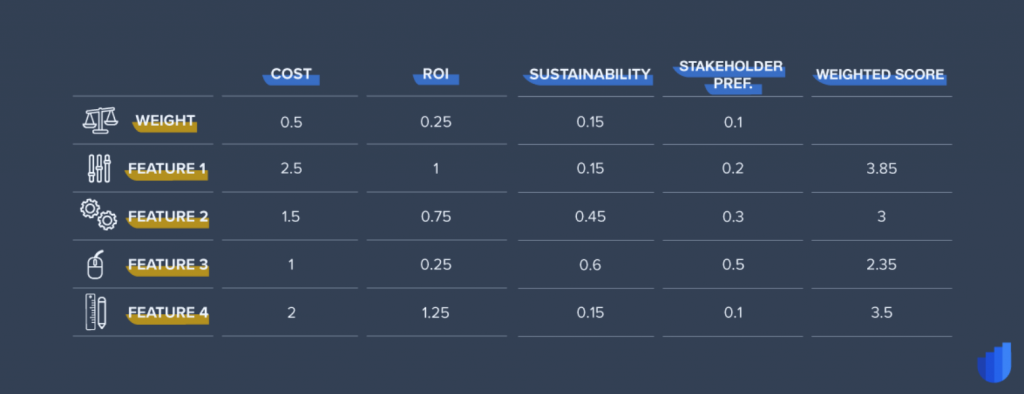
This approach adds a layer of objectivity to the prioritization process, enabling teams to make informed decisions based on a comprehensive analysis.
It transforms the prioritization exercise into a systematic and data-driven process, enhancing the robustness of decision-making.
4. RICE Scoring Model
The RICE scoring model introduces a holistic scoring mechanism that considers:
- Reach
- Impact
- Confidence
- Effort
Reach gauges the potential user base impacted by a feature, Impact measures the degree of influence on users, Confidence evaluates the certainty of successful implementation, and Effort estimates the resources required for execution.
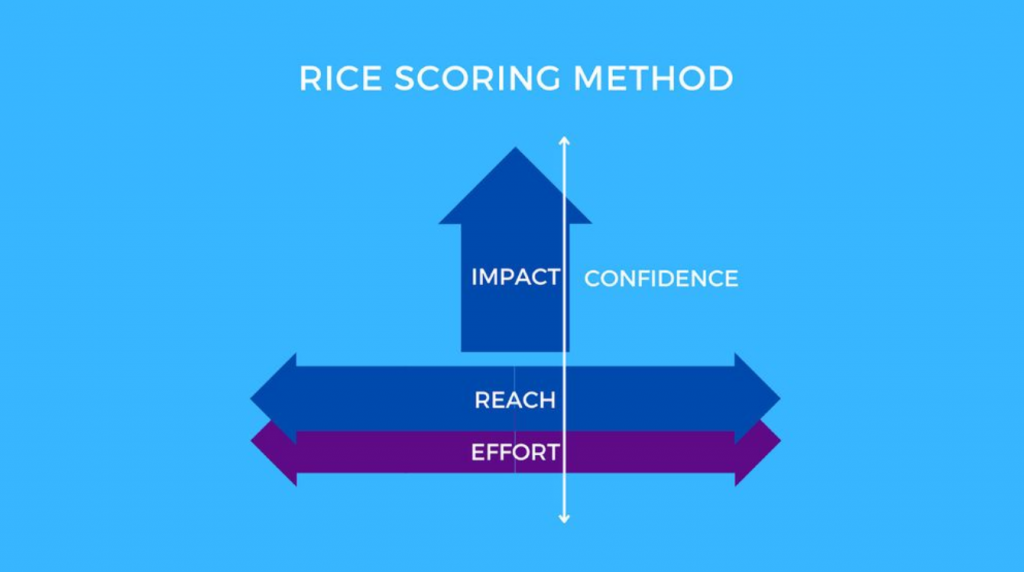
Each criterion is assigned a score, and the cumulative score aids in prioritizing features. This comprehensive model ensures that prioritization accounts not only for impact but also factors in feasibility, confidence in execution, and potential reach, offering a more nuanced and informed approach.
5. Continuous Feedback Loops
The implementation of continuous feedback loops transforms feature prioritization techniques into an adaptive and iterative process.
Regularly collecting insights from users, stakeholders, and team members throughout the development lifecycle ensures that priorities remain aligned with evolving needs and market dynamics.
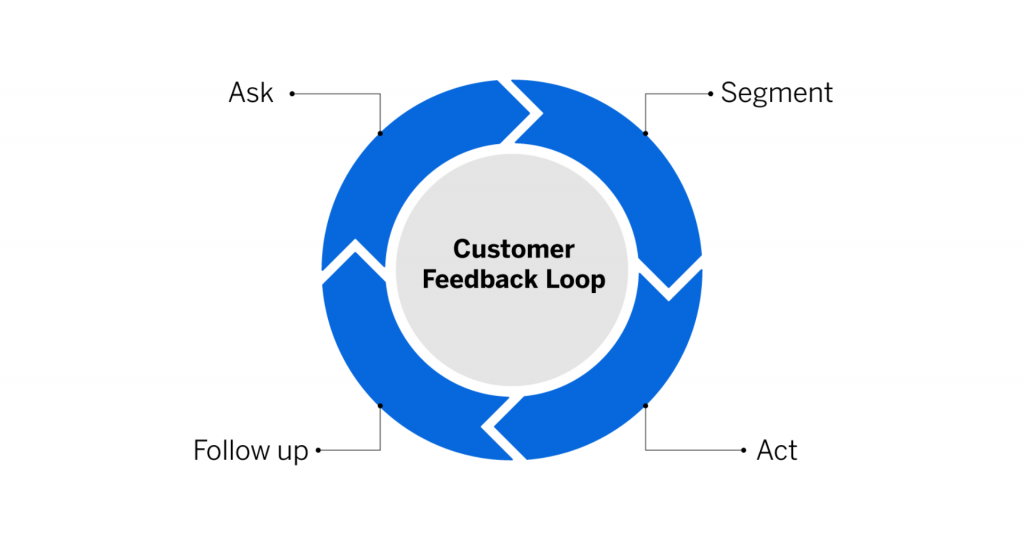
This strategy allows for real-time adjustments, responding promptly to changing circumstances and user preferences.
Here, Qualaroo, as a survey tool, proves beneficial in facilitating seamless and targeted feedback collection. Its user-friendly interface and advanced features enable teams to design surveys that capture nuanced insights, providing a valuable resource for informed decision-making and dynamic adaptation throughout the development journey.
Feature Prioritization Survey Questions to Ask
These Feature prioritization survey questions cover a range of aspects, ensuring a comprehensive understanding of user preferences, the potential impact of features, implementation considerations, user experience, and openness to future innovation. Let’s take a look:
User Needs and Preferences
- What features do you currently find most valuable in our product?
- Are there any pain points or challenges you experience with the current features?

- Which features would you consider essential for your daily use?
- What additional features would significantly improve your overall experience?
- How would you prioritize ease of use versus advanced functionality?
- Does this [website/app] have all the features and functionalities you expected?
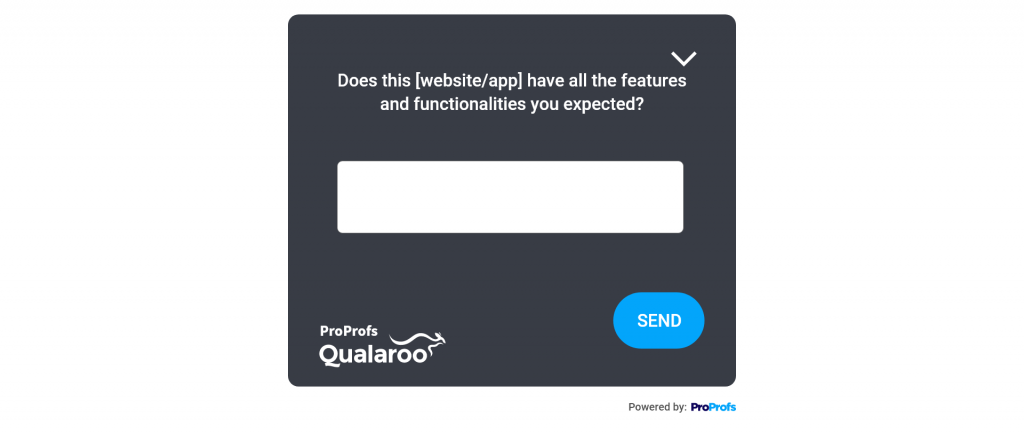
Impact and Value
- Can you identify features that would have a direct impact on your productivity?
- What’s one feature we can add that would make our [product/service] indispensable for you?
- How do you perceive the importance of each feature in achieving your goals?
- Are there features you believe would provide a competitive advantage to our product?
- Which features, if improved or added, would make you more likely to recommend our product to others?
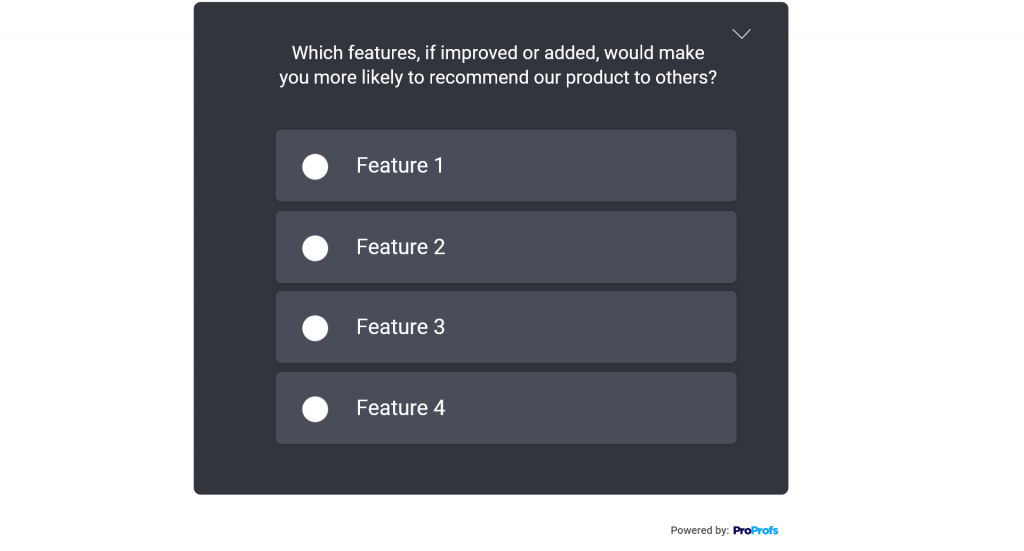
- In your opinion, what features contribute the most to the value you receive from our product?
Implementation and Effort
- How do you perceive the ease of use of the current features?
- Are there features that you think would be difficult to implement but highly beneficial?
- Would you prefer frequent updates with smaller improvements or less frequent updates with major feature additions?
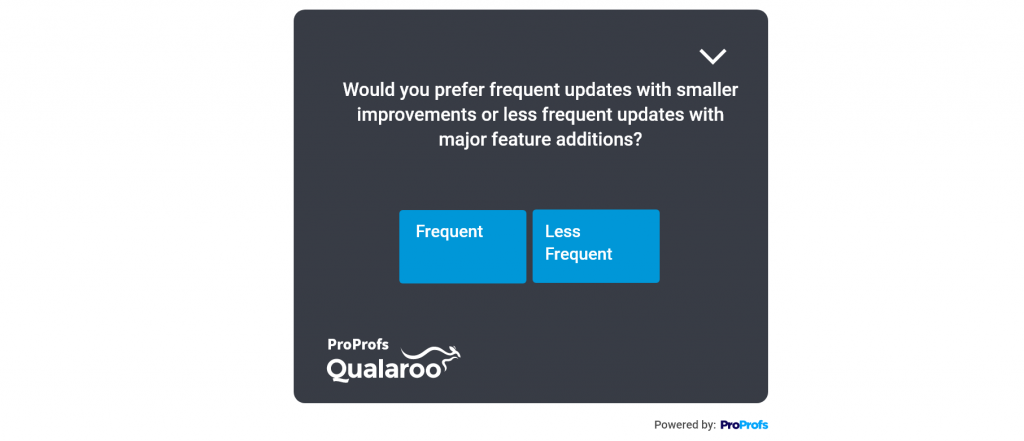
- Do you consider any features as must-haves, even if they require more development time?
- Are there features you would be willing to sacrifice for a faster overall product release?
User Experience and Design
- How satisfied are you with the current user interface and overall design?
- Are there specific design elements or features that you find confusing or unnecessary?
- Which aspects of the user experience do you find most enjoyable and intuitive?
- How important is consistency in design across different features of the product?
- Would you value additional features even if they slightly altered the current user interface?
Future Trends and Innovation
- Are there emerging technologies or trends you would like our product to incorporate?
- How do you envision the future of our product in terms of features and functionalities?
- Would you be interested in beta testing or early access to upcoming features?
- Are there features from other products or industries that you would like to see integrated into ours?
- How important is it for our product to stay ahead of competitors in terms of innovation?
Also Read - What Survey Questions Should I Ask?
Turn Insights Into Action From Feature Prioritization Surveys
As we reach the end of our discussion, we need to remember it’s not just about features—it’s about people who use them. We’re not merely crafting a product; we’re crafting an experience that resonates with the desires and needs of our users.
The feature prioritization techniques and methods we learned above will help categorize and prioritize features, aligning them with user needs. Also, crafting meaningful feature prioritization survey examples has been crucial, guiding us in understanding user preferences, feature impact, and implementation efforts.
Tools like Qualaroo come in extremely handy in such cases. Its intuitive interface and advanced features help design surveys that capture nuanced insights, offering a valuable resource for informed decision-making.
FREE. All Features. FOREVER!
Try our Forever FREE account with all premium features!






